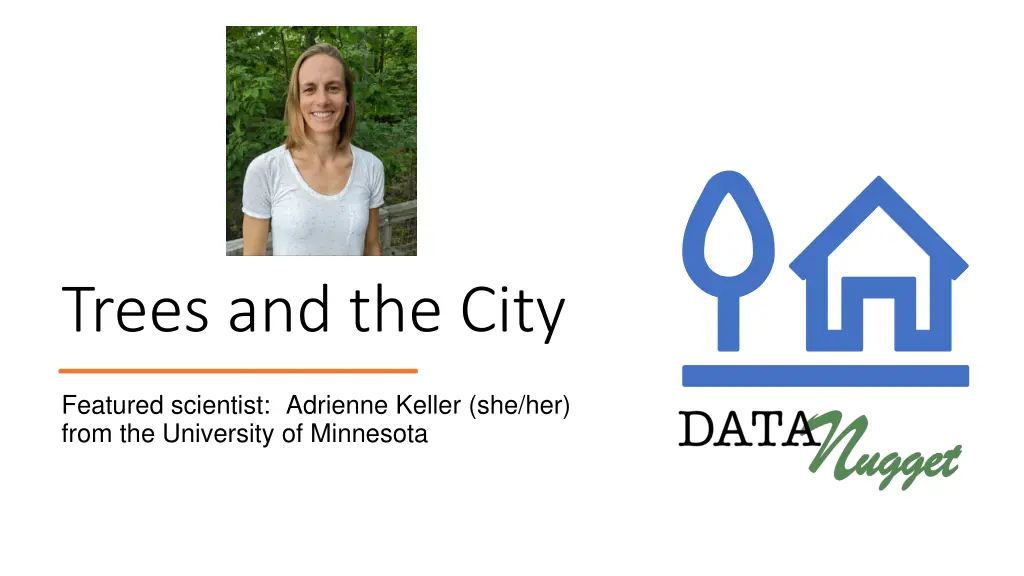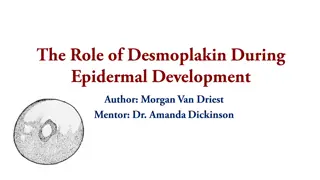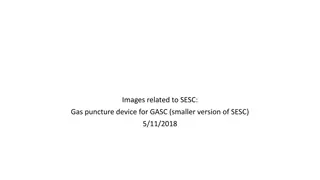
Unveiling Urban Tree Patterns and Social Disparities in Minneapolis and St. Paul
Explore the fascinating research of Adrienne Keller, an ecologist from the University of Minnesota, as she delves into the relationship between tree cover, tree species richness, household income levels, and BIPOC residents in Minneapolis and St. Paul. Discover how tree patterns in neighborhoods reflect social disparities and environmental equity, shedding light on the intricate connections between urban development and biodiversity.
Download Presentation

Please find below an Image/Link to download the presentation.
The content on the website is provided AS IS for your information and personal use only. It may not be sold, licensed, or shared on other websites without obtaining consent from the author. If you encounter any issues during the download, it is possible that the publisher has removed the file from their server.
You are allowed to download the files provided on this website for personal or commercial use, subject to the condition that they are used lawfully. All files are the property of their respective owners.
The content on the website is provided AS IS for your information and personal use only. It may not be sold, licensed, or shared on other websites without obtaining consent from the author.
E N D
Presentation Transcript
Trees and the City Featured scientist: Adrienne Keller (she/her) from the University of Minnesota
When Adrienne first moved to the Twin Cities in Minnesota, she started exploring Minneapolis and St. Paul by bike. Biking is done at a slow enough pace where she can travel long distances but still make observations about neighborhoods in these cities. As an ecologist, she naturally found herself looking for patterns in trees.
She noticed some older neighborhoods in St. Paul have a lot of large trees that provide plenty of shade and tree cover. In other neighborhoods, Adrienne saw fewer types of trees and noticed that she spent less time shaded by branches and leaves.
% Tree Cover Tree Species Richness (# tree species per Block Group) 0 to 20 20 to 40 40 to 60 60 to 80 80 to 100 0 to 20 20 to 40 40 to 60 60 to 80 Minneapolis St. Paul Minneapolis St. Paul Maps of different neighborhoods in Minneapolis and St. Paul. Note that the maps show the key variables that Adrienne was interested in: % tree cover, tree species richness, resident household income levels, and % BIPOC residents. White areas on the maps indicate where there are no data available. % BIPOC Median Household Income ($) 0 to 20 20 to 40 40 to 60 60 to 80 80 to 100 <$30k $30 50k $50 75k $75 100k $100 300k Look closely at the maps and identify any patterns or trends. Minneapolis St. Paul Minneapolis St. Paul
Data For Median Household Income (in dollars) Minneapolis St. Paul Median Household Income ($) # of Block Groups 20 55 101 71 77 Tree Species Richness 32.4 36.4 40.3 43.5 47.3 # of Block Groups 13 46 82 49 32 Tree Species Richness 31.1 32.5 34.5 38.5 37.8 Cover (%) 19.4 26.0 28.7 33.1 38.4 Cover (%) 32.5 33.1 33.2 39.5 40.7 <30k 30-50k 50-75k 75-100k 100-300k
Graphs For Median Household Income (in dollars) 50 50 45 45 40 40 Tree Species Richness 35 35 Percent Tree Cover 30 30 25 25 20 20 15 15 10 10 5 5 0 0 0 1 2 3 4 5 0 1 2 3 4 5 Median Household Income Median Household Income
Data For % BIPOC Minneapolis St. Paul # of Block Groups 41 71 48 36 34 21 17 20 20 13 Tree Species Richness 45.5 45.3 38.8 42.2 39.8 41.1 39.6 36.6 39.0 34.6 # of Block Groups 21 35 42 11 12 20 25 34 14 6 Tree Species Richness 34.6 36.4 37.7 36.9 31.5 35.2 37.2 32.8 31.1 30.2 % BIPOC Cover (%) 39.0 35.4 30.5 30.2 27.1 25.7 27.8 24.0 25.0 23.9 Cover (%) 39.5 39.2 34.1 35.6 30.2 39.0 35.6 33.3 31.6 30.6 0-10 10-20 20-30 30-40 40-50 50-60 60-70 70-80 80-90 90-100
Graphs For % BIPOC 50 50 45 45 40 40 Tree Species Richness 35 35 Percent Tree Cover 30 30 25 25 20 20 15 15 10 10 5 5 0 0 0 1 % BIPOC Residents in Neighborhoods 2 3 4 5 6 7 8 9 10 11 0 1 2 3 4 5 6 7 8 9 10 11 % BIPOC Residents in Neighborhoods






















